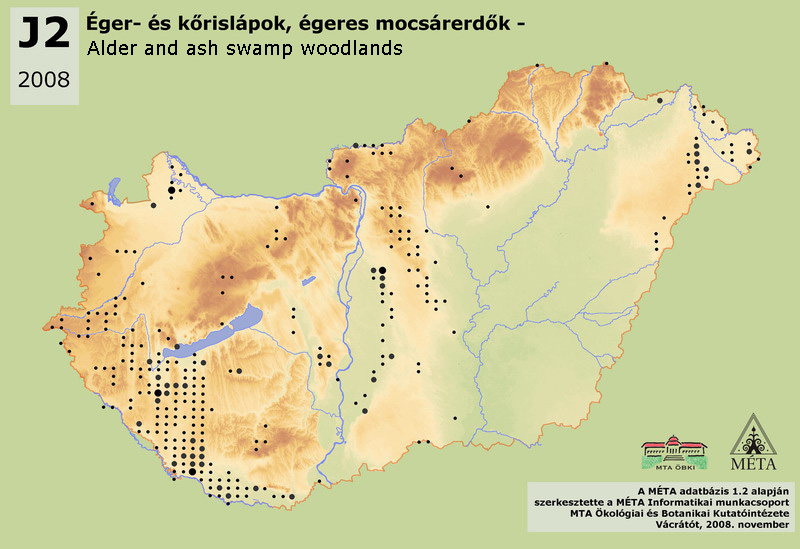MÉTA Program >>> Habitat distribution maps


J2 – Alder and ash swamp woodlands:
Forest dominated by Alnus glutinosa or partly by Fraxinus angustifolia subsp. pannonica on peat or peaty soils. This habitat is rich in mire species (e.g. Thelypteris, Carex elata) and is usually waterlogged also in summer. Their water is constantly stagnant, or moving slightly only in rainier periods (marsh forests). Dried-out and drying stands with changed water supply also belong to this habitat type. In contrast to riverine ash-alder woodlands they are poor in species of oak-hornbeam and beech forests. The most frequent swamp forest type of Hungary; its actual area is around 3600 ha. More than its half can be found in the Dunántúli-dombság (1450 ha), but large stands occur also on Dunai-Alföld (950 ha), especially on Dráva-sík and Turjánvidék. It covers 570 ha on Kisalföld, mainly in Hanság. On Tiszai-Alföld (300 ha) it is common only on Nyírség and Szatmár-Beregi-sík. It is sporadic in the Északi-középhegység (180 ha), on Nyugat-Dunántúl (165 ha), rare in the Dunántúli-középhegység (7 ha). It is independent from the macroclimate; its distribution refers mostly to the water conditions. Many stands are alder plantations on the places of sedge communities. The classification of these transitional stands is uncertain.
Molnár, Zs., M. Biró, J. Bölöni & F. Horváth (2008): Distribution of the (semi-)natural habitats in Hungary I.: Marshes and grasslands, Acta Botanica Hungarica 50 (Suppl): 59-105. >>> letöltés (5,4 MB, PDF)
MÉTA Program,
MÉTA Fotótár
MÉTA Élőhely-Ismereti Útmutató (ÉIÚ),
MÉTA Adatlap-Kitöltési Útmutató (AL-KÚ)
(C) MÉTA Informatika, 2005-2009,
MTA Ökológiai és Botanikai Kutatóintézete